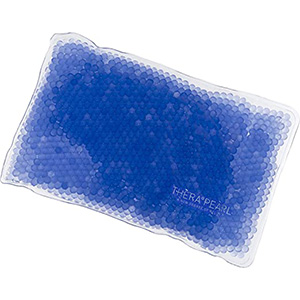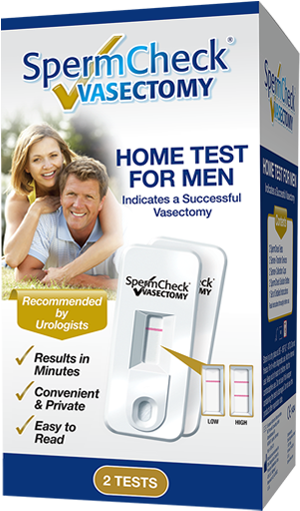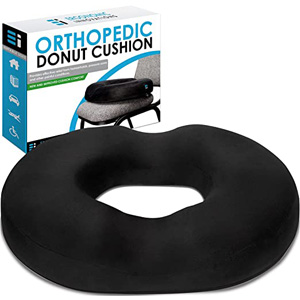I am writing this from Louisiana, USA, and just want to first say I got a lot out of your site. It gave me a lot of information other sites did not. While most other sites on this subject give a lot of numbers and clinical stuff, your site provided also a human perspective, how it really feels for the patient. Since your site helped me, I’m enclosing my vasectomy story as a way of giving something back for all the help you gave me.
One thing that makes my story somewhat different from many of the others on your site is I am not married but engaged to be married in a couple of weeks. My fiancee and I have made a commitment to a child-free lifestyle, which is why I had the procedure. My doctor fully understood and had no trouble at all with an unmarried person without children having a vasectomy.
I hope you use my story on your site, and that it will help others as all of your other contributors helped me. Keep up the good work.
The Snip: My vasectomy experience
I’m a 32-year old single male, no children, who has known for a very long time that he does not want to have children. Today I’m engaged to a wonderful lady who shares that view. After looking at our situation and doing some research, we decided that sterilization would be our best option for birth control. After looking at sterilization options, we decided our best choice would be I have a vasectomy because the surgery is less complicated than female sterilization, and less expensive as well.
Fortunately, my health plan covers the vasectomy procedure and the costs associated with it. A friend told me of a good urologist he had known for many years, so I telephoned his office and after learning he was on my insurance plan, I made an appointment for a consult. I had to wait nearly 2 weeks until October 30, but as I will tell you, it was worth it.
One concern I had was 5 years before; my left testicle was removed due to cancer, which, fortunately, I have been free of ever since. What I learned during our consult was that it didn’t add to the risk and in fact, made the operation easier because the doctor would only need to operate on one side as opposed to two.
During our discussion, the doctor stressed the operation must be looked at as permanent sterilization, even though there is a possibility that it can be reversed. After stating I understood that, he examined me, had me go into another room and provide a urine sample, and then schedule. I held off schedule because I wanted to talk with my fiancée about it first because even though we had talked about it many times, I wanted to be certain that she was as sure about it as I was. Fortunately, she said, “Do it,” so I decided to call in and schedule the next day.
The only worry I had was because my fiancée lives in another city and couldn’t get away from work, I would have to bring myself to the doctor’s office and back home. The doctor said I wouldn’t be able to drive home, and when I explained the situation and how I didn’t want others involved, he said he would be willing to accommodate me by letting me stay around for an hour or so afterward while the drugs wore off.
The next day, I spoke with his staff about getting scheduled, and since all the Fridays were taken until December, I decided to have the surgery on November 14, a Tuesday, at 11:30 AM. Since my employer has a very good paid sick leave policy, I decided to take the Tuesday surgery and have the rest of the week off to recuperate. I did not tell my employer what surgery I was having, only that I was having minor surgery and needed time off for a few days afterward. Fortunately, they had no problem with giving me the time.
I found that this doctor preferred scheduling 10 days in advance so certain preparations could be made. Amongst preparations I was instructed to make were staying away from over the counter pain relievers such as aspirin, ibuprofen, etc., for the 10 days because they can act as blood thinners which can lead to excessive bleeding during the surgery. I was also told to avoid alcohol for 3 days prior, and to shave my scrotum either the night before or the morning of the surgery. For after the surgery, I was instructed to wear an athletic supporter and to use ice on my scrotum to keep the swelling down afterward.
The night before, I was a little nervous but knew how important this was, so I shaved with a good disposable razor and shaving cream. I was extra careful not to irritate or nick my skin because the doctor might not perform the operation if there were any problems. Beforehand, I had purchased an icepack and athletic supporters so I would be prepared.
The morning of the surgery, I rode in a taxi to the doctor’s office, leaving early so I would arrive on time. I arrived early and visited with some people in the lobby of the building to calm my nerves a little. At the office, I was required to sign a consent form stating I understood the procedure would result in permanent sterility. I also provided the telephone number of my neighborhood pharmacy, so they could contact them to have the prescription ready for me when I left the office.
The next step, I was taken into an exam room, where I was instructed to empty my bladder, pull my pants down, then lie down on a table and was covered up the waist down. My scrotum was then cleaned and covered with a sterile dressing, and I was given 2 injections, one in each hip, which was a muscle relaxant to calm me and deaden the pain before surgery. After about 20 minutes or so, I was relaxed and the doctor along with his nurse walked in.
The doctor and nurse began the procedure. I’m not sure exactly what was done, because I closed my eyes at this point, and since the instrument table was in the way, I couldn’t have seen much anyway. I felt a strong tug on my scrotum and a sensation that felt like a needle going into it. I heard something that sounded like wires being cut, which I assume was the vas being severed. After this point, I smelled something burning, similar to a soldering iron, which was most likely the cauterization of the vas. After this, I think the incision was closed and the doctor stated he was finished and “It’s always easier when I only have to do one side.” The surgery took only took around 20 minutes or so to perform, which coincided with the research I had previously done concerning vasectomies. In fact, preparing took more time than the operation itself.
Once it was done, I stayed on the table, and then they helped me up and moved me into another room. I was also reminded “You’re still dangerous,” that a sperm sample would be taken in 2 months, and that I wouldn’t be sterile until two samples were taken and the count was zero on both. I had some difficulty walking, not because of the pain, but because the medication made me a little dizzy. They sent someone downstairs to the cafeteria to get me a sandwich because eating would make the effects of the drug wear off faster. After about an hour, we scheduled my first follow up appointment in 2 weeks, my taxi was called, and I was taken by wheelchair to the lobby.
I then had the taxi take me to the pharmacy where I picked up my prescription for Hydrocodone, a generic equivalent of Lorcet, for the pain, and then I was taken home. My fiancée had contacted a nearby pizza delivery and arranged to have a large pizza with everything delivered to me. She was still trying to pamper me, even though she couldn’t do it in person.
I took one of the pills and used a pack of ice on my scrotum for the entire day, along with wearing an athletic supporter. The next day, I used the ice and a pain pill again, and the pain subsided. I also didn’t have any swelling, so I didn’t need the icepack anymore. What I did basically for the rest of the week was sitting with my feet up, read, watch TV, and play on the Internet. There was some tenderness of the scrotum, but not as bad as I expected. Wearing an athletic supporter really did help. On Monday I returned to work, still wearing an athletic supporter, and feeling very little pain. What I found was standing for a long time caused some scrotal pain, so I sat or laid down as much as possible. As the days went by, the pain was less and less, and within a short time, I didn’t need the pills or athletic supporter anymore.
Two weeks after the surgery, I visited the doctor’s office again. I spoke with his nurse, who assisted during the surgery, and let her know I was doing just fine and had no discomfort. She then reminded me that I was still dangerous until two clear sperm samples were taken, and handed me a paper bag containing two bottles for the sperm samples and two forms, which basically asked for when and how the sample was taken and told me to bring it in 6 weeks to the lab, which she then showed me. The only other instructions regarding the sample were it was to be brought between 9 AM and 4 PM and if possible, it was to be no more than an hour old.
The day to provide my first sample came on January 9, 2001. I was required to simply bring the sample to the lab along with a short questionnaire asking how the sample was taken (Masturbation or Other, meaning, sex, withdrawal, etc.) when it was taken, and how many days since the last ejaculation before the sample took place. The next day, I spoke with the doctor’s nurse who stated my sample had “rare, non-motile sperm,” which meant there were some sperm in the sample, but they weren’t moving and that was not uncommon for a first sample, and that I was to provide another sample in a month.
On February 7, 2001, 4 weeks later, I provided another sample the same as done in January and was given another specimen cup and questionnaire because I had already used the two provided to me in January. That afternoon, I learned results were “very rare, non-motile sperm” were still present, and I was then instructed to repeat the test in March. I was also told not to get discouraged because this was not uncommon. Still, it was a little disheartening to have failed the test for a second time.
The morning of March 6, 2001, I provided the third sample, and received another specimen cup with the idea I would have to provide at least one more sample, even if this sample was clear. That day wasn’t easy for me, because I could not stop thinking about the results of the test. At around 3:30 PM, I telephoned the doctor’s office to get my test results but was told they weren’t ready yet and would be called back once they were. Around 45 minutes later, I received a telephone call and was told there was no sperm present, at which point I gave a sigh of relief. The nurse then instructed me to bring another sample in two weeks, and if that sample was also negative, I would be considered sterile.
On the morning of March 20, 2001, I brought my fourth sperm sample to the lab. That afternoon, I contacted the office and learned that sample was also negative, so now I’ve been given the all-clear, and four months after the surgery, I am sterile. This was a relief to me because I was a little concerned about taking so long to be declared sterile. According to my research, most are sterile within 2 months, but I took twice that long. I was concerned the surgery had failed but was relieved when I learned it had not.
All in all, my experience was good. My doctor and his staff were very accommodating of my situation, and the procedure went without a hitch. Having had surgery in that part of my body before may have made the pain a little more tolerable for me than it would have been for others, but it still wasn’t bad. I was able to drive 2 days later and was back to work 5 days later. I was also able to take care of myself on my own without help but would have preferred if my fiancée could have been there with me. For any man who is sure they do not want children or more children, I believe a vasectomy is the best option.
Submitted by Jonathan
Recommended products for recovery
We only recommend products we think are useful for our readers. If you make a purchase, we may earn a small commission. JockstrapsPapi Men’s Cotton Jock Strap 3-Pack
JockstrapsPapi Men’s Cotton Jock Strap 3-Pack Ice packsTheraPearl Ice Pack with Gel Beads
Ice packsTheraPearl Ice Pack with Gel Beads Home Vasectomy TestSpermCheck Vasectomy Test Kit
Home Vasectomy TestSpermCheck Vasectomy Test Kit Donut-shaped pillowErgonomic Innovations Orthopaedic Seat
Donut-shaped pillowErgonomic Innovations Orthopaedic Seat